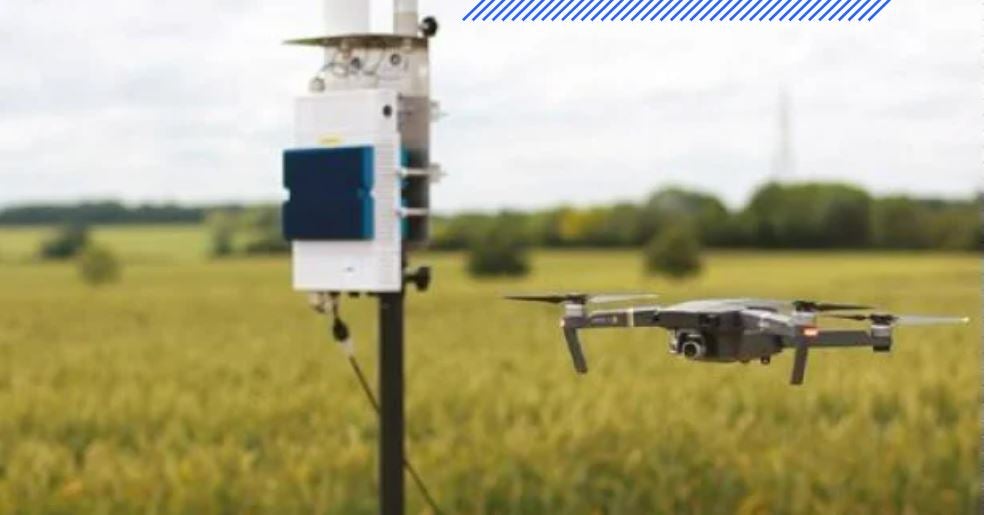
The annual listing of 10 companies that are at the forefront of providing drone solutions and impacting the marketplace
Advancing Drone Defense with Unique RF Sensing Technology: CRFS is a leading provider of radio frequency (RF) spectrum monitoring and EMSO solutions.
“We provide situational awareness to our customers, allowing them to understand everything in the wireless RF domain by giving them complete visibility,” says Scott Zederbaum.
A device-agnostic approach allows the detection and geolocation of specific signals in 3D. The RF data is detected through passive nodes and transmitted to an app that transforms recorded RF data into actionable intelligence. Small node networks (<1km) can protect a facility, while larger monitoring networks (hundreds of kilometres) can monitor airspace.
CRFS’ agnostic approach does not limit its identification capabilities, it enhances them. It has incorporated advanced intelligence into its systems, integrating edge processing capabilities into RFeye Nodes called “detectors.”
A detector functions as a filter, enabling the RFeye Node to focus on identifying specific signal types. For instance, the DJI Ocusync protocol can be designated as a target signal, allowing the system to determine the presence of DJI drones exclusively or in combination with other drone types. This tailored signal analysis facilitates drone localization even in densely populated environments, as it efficiently homes in on drone-related pulses, either generic or attributed explicitly to DJI.
Unlike its competitors, it leverages the physical characteristics of RF emissions. This system does not rely on predefined signal libraries or specific drone identification. Instead, it actively seeks RF emissions and their temporal differences to discern the presence of any airborne emissions, irrespective of the drone’s make or model.
“Our signal detector hunts the spectrum for drone signals. We detect and geolocate commercial, military, and DIY drones. The system is highly discriminate and can pick the right signals out of a congested spectrum in real time with a high degree of discrimination and accuracy,” says Jon Bradley.
The company’s systems constitute a vital component of a multi-layered approach, providing passive RF detection capabilities. The RFeye Nodes can integrate into larger datasets or technology stacks, supporting comprehensive counter-UAS systems encompassing RF, radar, optics, acoustics, and potential takedown mechanisms.
“Understanding the customer’s specific application is of paramount importance to CRFS,” says Jade Long. The company has developed multiple techniques to achieve precise geolocation—the angle of arrival (AoA), time difference of arrival (TDoA), and power on arrival (PoA)—each applied depending on the customer’s specific needs and applications. After assessing the installation site and its environmental conditions, customers are provided with an optimal solution.
“Our customers have the flexibility to construct customized coverage and geolocation systems around our foundational component: the receivers. Our systems natively support the detection of handset radios, aircraft, and other signals across the spectrum, delivering unparalleled flexibility,” says Jon Bradley.
Using high-performance modular sensors with an open architecture, CRFS helped a client strengthen their drone defence programme. The client experienced a significant augmentation in its threat detection and protection capabilities. The wide frequency range of the CRFS solution played a pivotal role in this achievement. It empowered the client to detect increased threat targets and fortify its system’s security. The operational range of their design, previously limited to approximately 100 kilometres, underwent a remarkable increase, extending to many hundreds of kilometres. This noteworthy extension was made possible by the exceptional sensitivity of the CRFS receivers, allowing them to capture signals over long distances.
The client also benefited from the precise geolocation and software-defined capabilities of the CRFS solution. Despite operating across hundreds of kilometres, the geolocation algorithm utilized by CRFS proved accurate. Upon integration into the organization’s platforms, it amplified the precision and accuracy with which UAV assets in the sky could be detected and monitored.
CRFS’ solutions have proven instrumental in supporting the Department of Defense in establishing spectrum domination. With years of field-proven effectiveness, these solutions have set a new industry standard for accuracy in the spectrum monitoring arena.

